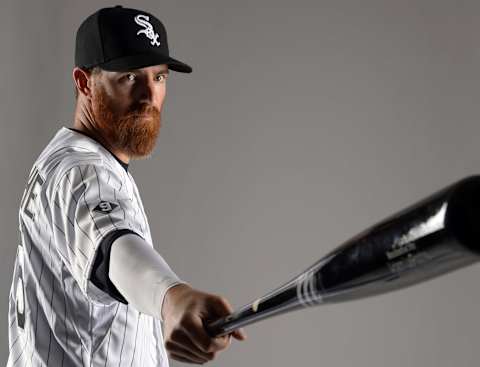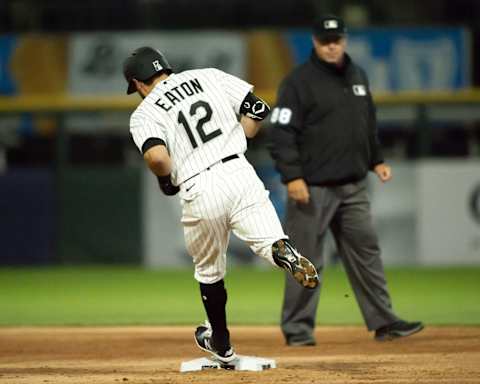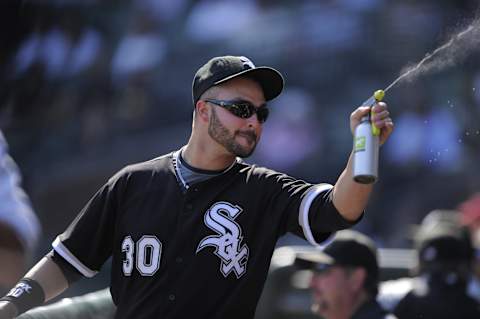3 worst contracts in modern Chicago White Sox history


As a baseball general manager, some moves pan out and others don’t. It comes with the territory. The Chicago White Sox have made some boneheaded moves over the years. In 1992 they traded Sammy Sosa to the Cubs. In 1976 they traded Rich Gossage who wound up being a Hall of Famer.
In 2016, they added James Shields for some guy named Frenando Tatis Jr. In recent years, Rick Hahn has been pretty good about making moves. His ability to lock up players to team-friendly long-term contracts has paid dividends.
Because Chris Sale was signed long-term, the White Sox were able to get a pool of prospects headlined by Yoan Moncada and Micheal Kopech out of him. Jose Quintana netted the White Sox Eloy Jimenez and Dylan Cease.
However, in the White Sox modern era, there have been contracts so bad that it leaves fans scratching their heads today. These three players turned out to be useless during their time with the White Sox. While the James Shields deal turned out to be regrettable, at least Shields ate up innings for the White Sox for three years and served as a mentor in the clubhouse.
The Chicago White Sox have handed out some bad contracts in recent years.
The following is a list of the three worst contracts in modern White Sox history from the 2000s to the present. These moves resulted in poor production, rifts in the clubhouse, and the season’s being derailed.
Because of all these factors, the team would like to have their money back. So without further ado, here are the three worst contracts in modern White Sox history:

Adam LaRoche
The Chicago White Sox did not need Adam LaRoche and the drama that came.
The Chicago White Sox won the offseason in 2016. For the first time in years, fans had a team to be excited about. Rick Hahn kicked off the winter meetings by trading for Jeff Samardzija and then followed that up by adding the best reliever on the market, David Robertson.
Hahn continued his spending spree by adding Melky Cabera, Zake Duke, and Emilio Bonifacio. None of these signings panned out. But none were worse than Adam LaRoche. The White Sox needed a designated hitter and had Victor Martinez on their wish list.
Martinez wound up resigning with the Tigers and hit .289 with 27 home runs the following season. Hahn settled with LaRoche instead who was another left-handed bat that could hit for power. He signed a two-year deal worth $25 million.
His first season with the White Sox was very unproductive. He only hit 12 home runs which was the lowest amount of his career in a season that he played at least 100 games. Despite hitting in the middle of the lineup, he drove in a pedestrian 44 RBIs.
Meanwhile, he was slashing .207/.293/.340 which is well below his career averages. The following offseason, the White Sox retooled by adding Alex Avila, Dioner Navarro, Brett Lawrie, Todd Frazier, Matt Albers, Matt Latos, and Jimmy Rollins. Once again, the team looked promising on paper.
However, the season got derailed before it even began because of LaRoche. Specifically his 14-year old son Drake. Adam had let Drake hang around the clubhouse the entire season. According to Kenny Williams, he was around 100% of the time.
He even had his own locker and his own uniform. This is not normal. When veterans like Jimmy Rollins and Todd Frazier entered the clubhouse they began to grumble about how strange it was. Eventually, some players complained about the excessive nature of Drake being in the clubhouse.
Trouble began to emerge in the locker room. Chris Sale and Adam Eaton took the side of LaRoche. When Kenny Williams suggested dialing back Drakes appearances in the locker room, Adam LaRoche opted to retire before the season even started, leaving $13 million on the table. Chaos ensued.
The rift between Todd Frazier and Adam Eaton got so bad that their lockers had to be separated. Chris Sale was so upset at Kenny Williams that he screamed at him to get out of the clubhouse. The White Sox almost boycotted a spring training game. Robin Ventura even considered resigning before the season.
The entire situation was a complete sideshow. Drake LaRoche came across as spoiled, Chris Sale and Adam Eaton looked completely out of touch, and the White Sox season was doomed from the start. They finished fourth in the divison with a 78-84 record. Overall, the Adam LaRoche signing was one they would have liked to have back.

Adam Eaton
Adam Eaton coming back to the Chicago White Sox was a horrendous decision.
Adam Eaton was a great player during his first stint in Chicago. He quickly endured himself to fans for his scrappy style of play. Eaton was a .281 hitter on the Southside and led the league in triples in 2014 and 2015. He accumulated an 8.8 WAR during his first four seasons in Chicago before being traded to Washington for Lucas Giolito, Reynaldo Lopez, and Dane Dunning.
The deal worked out well for both sides as Giolito turned into an All-Star and Dunning netted the White Sox Lance Lynn. Meanwhile, Eaton won a World Series with the Nationals.
The White Sox began to turn the corner in 2020, making the playoff for the first time since 2008. However right field was a glaring issue. Rick Hahn tried to patch the hole by trading for Nomar Mazara. Mazara had just one home run all season and was quickly jettisoned from the roster.
When Eaton hit free agency in 2021, Rick Hahn wanted to try to rekindle some old magic. Eaton was signed to a deal worth $7 million. The signing was not good for multiple reasons. For starters, Eaton had become injury-prone.
In 2017 he only played 23 games before suffering a torn ACL. The following season, a left ankle bone bruise landed him on the injured list for 67 games. After a productive 2019 season, he only appeared in 41 games out of 60 in 2020.
His production also was not there. He hit just .226 during his final season in Washington. To add insult to injury, George Springer, Eddie Rosario, Kyle Schwarber, and Micheal Brantley were all available. The White Sox instead decided to play it cheap and they got what they paid for.
What transpired was not shocking to anyone. The 32-year-old coming off a terrible season could not hit. He didn’t even last the full season on the roster. Eaton had a career-high 25.1 strikeout rate. As a left-handed hitter, he was supposed to be able to hit right-handed pitching but he struggled to the tune of a .210 average with a subpar 94 wRC+.
Nagging leg issues bothered him and his production deteriorated. He had a stretch from April 16th to July 6th when he hit just .182 with two home runs and 18 RBIs.
His final game came on July 6th in Minnesota. Fittingly, he struck out twice and was DFA’d the next day after playing just 58 games. His final slash line was .201/.298/.344. This signing was terrible because everyone knew that Eaton was a shot fighter.
Injuries had taken their toll on his body and better options were available. For a team looking to contend, not having a right fielder cost them dearly. On the current roster, Tim Anderson, Yoan Moncada, Eloy Jimenez, and Luis Robert have all been locked up for an extended period of time.

Nick Swisher
Nick Swisher was mostly a headache for the Chicago White Sox organization.
Unlike the other two names on this list, Nick Swisher was not a free agent signing. But the move turned out so bad that the contract they took on looks completely unreasonable given the end result.
Jim Thome gets along with almost everyone but even he knew that Nick Swisher was going to be a problem from the first day he entered the locker room. Swisher entered the clubhouse acting like he had just taken an IV shot of coffee and was screaming like a banshee.
The White Sox were two years removed from the World Series. They were still looking to contend in 2008 so Kenny Williams swung a trade for Nick Swisher. Swisher was brought in with the hopes he could be their leadoff man. He was coming off a season where he drew 100 walks and had a .381 OBP. Swisher had hit 35 home runs in 2006 and 22 in 2007 so he provided some power as well.
The White Sox parted ways with Gio Gonzalez (who later emerged as a solid pitcher) and Ryan Sweeny (who went on to be an everyday player for the Oakland A’s) to acquire him. The White Sox still decided to take on the four years remaining in his contract that had an average salary of $5,350,000.
The move turned out to be a total flop. He batted .219 and his.OBP dipped to .332. By the end of May, he was hitting in the seventh and eighth spots in the lineup. On defense, he was a train wreck. He committed seven errors and was worth a -11 defensive runs saved in just 70 games.
Swisher also got benched for having a poor attitude. The White Sox traded assets for him with the intention of keeping him for four seasons. They couldn’t get rid of his contract fast enough, trading him to the Yankees weeks after the season was over. It was still $3,500,000 they will never get back.
What made the move even more frustrating was the fact that Swisher went on to become an All-Star the following season and won the World Series with the Yankees. Hopefully, the team is just a bit smarter going forward.
Related Story. This White Sox fact is incredibly embarrassing. light